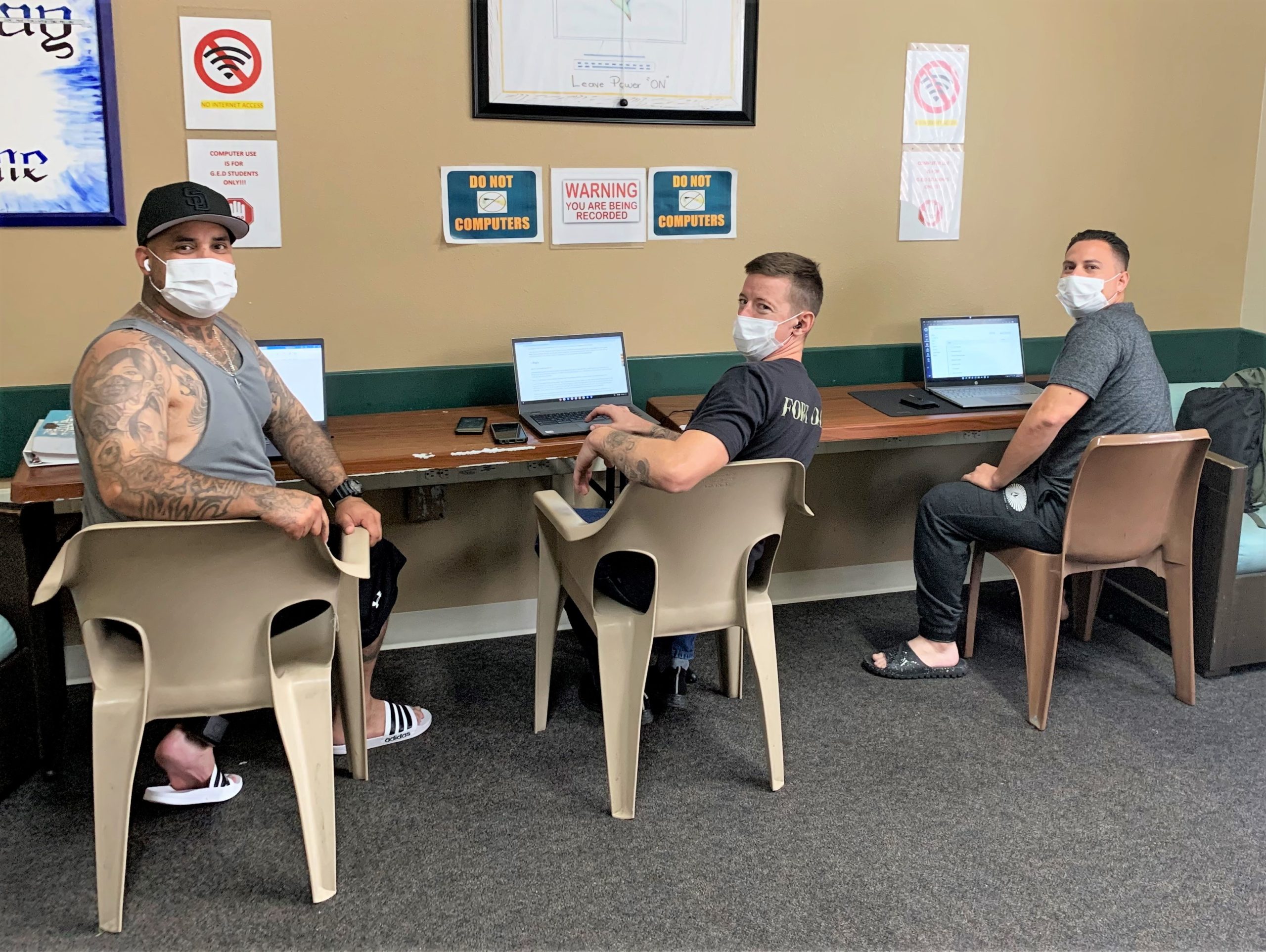(Editor’s note: Inside CDCR takes a closer look at Community Re-entry Program participants attending college on campus.)
College students turn page on future with re-entry program
Of all the places on the Palomar College campus in San Diego, Leonard Sambrano likes the library best.
Offering peaceful places to study, helpful resources and a bounty of knowledge, the community college’s library is a frequent stop for the 42-year-old freshman.
“You can pick up any book and learn something on the spot,” Sambrano said. “Growing up, my parents didn’t introduce us to the library. It’s been a fascinating experience.”
Sambrano is among the incarcerated people housed in 12 CDCR community re-entry facilities who are turning a new page by attending college on campus. There are six facilities for men and six for women.
Michael Hagemann, a correctional counselor III at the San Diego MCRP, said he’s seen how access to college campuses and interactive virtual learning impact residents.
“It’s changing their future,” he said. “This education experience offers them the ability to obtain long-term, self-sustaining employment and the ability to earn a competitive living wage.”
What are re-entry programs?
The Male Community Reentry Program (MCRP) and the Custody to Community Transitional Reentry Program (CCTRP) are voluntary programs for eligible men and women with less than two years to serve on their prison sentence. Participants instead serve out the remainder of their time in a community-based facility.
Residents are provided with rehabilitative services that assist with substance use disorders, mental health care, medical care, employment, education, housing, family reunification, and social support. Once participants complete a certain level of in-house programming, they are eligible for off-site leave for approved purposes such as work, church or attending college.
“Empowering incarcerated individuals through education is a key component of sustained, successful rehabilitation,” said Capt. Jorge Moreno, part of the Division of Rehabilitative Programs responsible for overseeing MCRPs. “It’s also a vital, proven component in reducing recidivism. These are the goals of the MCRP and CCTRP mission.”
Re-entry participants have attended campus since 2014
CCTRPs began allowing women to attend off-site college courses in 2014. MCRP students followed in 2016.
Cody Jastorff, 30, has lived at the San Diego MCRP since April 2022. He said it was a “surreal experience” to step off the trolley and onto the San Diego State University campus for orientation last week.
Jastorff will be studying psychology with a neuroscience focus. “I love the science of how our minds work,” he said. “I never dreamed I could be pursuing a psychology degree.”
A high school drop-out, Jastorff got his GED and then his associate degree while in prison. He loved the feeling of learning and getting good grades. A four-year bachelor’s degree program on a college campus was the next logical step. He hopes to be released next year and will finish his degree after he returns home.
Residents are provided with a number of resources to help them succeed. Volunteers from San Diego non-profit Getting Education Done guides students through all aspects of going to college, including enrollment and subject matter preparation.
Not tech-savvy, Sambrano said he received help to identify computer courses he could take before starting college. Now he feels comfortable with the laptop provided for educational purposes. He also received guidance on course selection. He’s pursuing a sociology degree with plans to become a drug and alcohol counselor.
College campus offers additional resources for re-entry participants
Jastorff said he’s already connected with the Project Rebound group on the San Diego State campus. This organization provides a host of resources and support to formerly incarcerated people. At the MCRP, the facility has set up a quiet area to study. They’ve also organized study groups and a computer lab to aid students in their college journey.
CDCR believes all incarcerated people, at any age, should be able to pursue an education. Ronald Reese is a case in point.
Reese, 68, is working on registering for business courses with a focus on the music industry. He’s not sure if he’s going to pursue an associates degree at San Diego City College or a certificate requiring less time. Whatever he chooses, he’ll be on campus later this month.
By Terri Hardy, Public Information Officer II
Office of Public and Employee Communications
Read more rehabilitation stories.
Follow CDCR on YouTube, Facebook, X (formerly Twitter). Listen to the CDCR Unlocked podcast.
